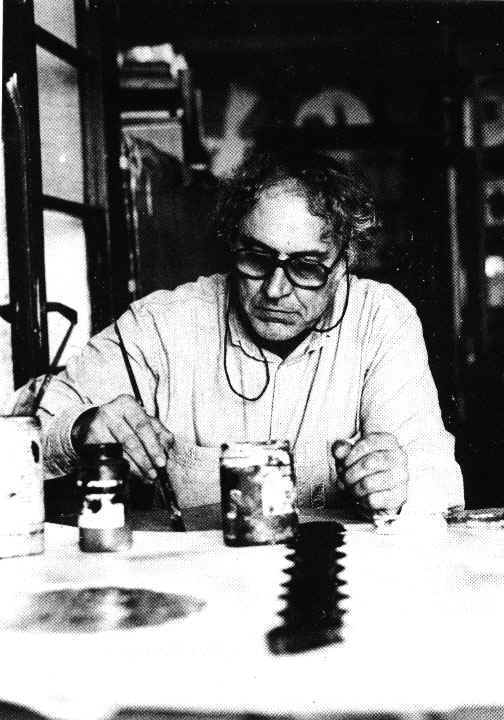Youth and training (1929-1955)
Daniel Argimon Granell was born in Barcelona on 20 June 1929. He is the second of the three children of Salvador Argimon and Maria Granell. His maternal grandfather ran a publishing house that reproduced religious images, where Argimon worked for a few years (from 1952 to 1956) in the technical department (paper selection, colour, etc.), an activity that was to influence the artist’s future career.
Around 1946, he produced his first drawings. A year later, he began his higher education as an electrical engineer at the Industrial School of Terrassa, but he abandoned it in 1952 as, by this time, the young man had decided to devote himself to art and attended evening classes in drawing and painting at the Escola Massana as a free student.
In 1955, Argimon married Josefa Maza Meneses, with whom he had six children: Victòria, Isabel, Eugènia, Jordina, Sergi and Marc.

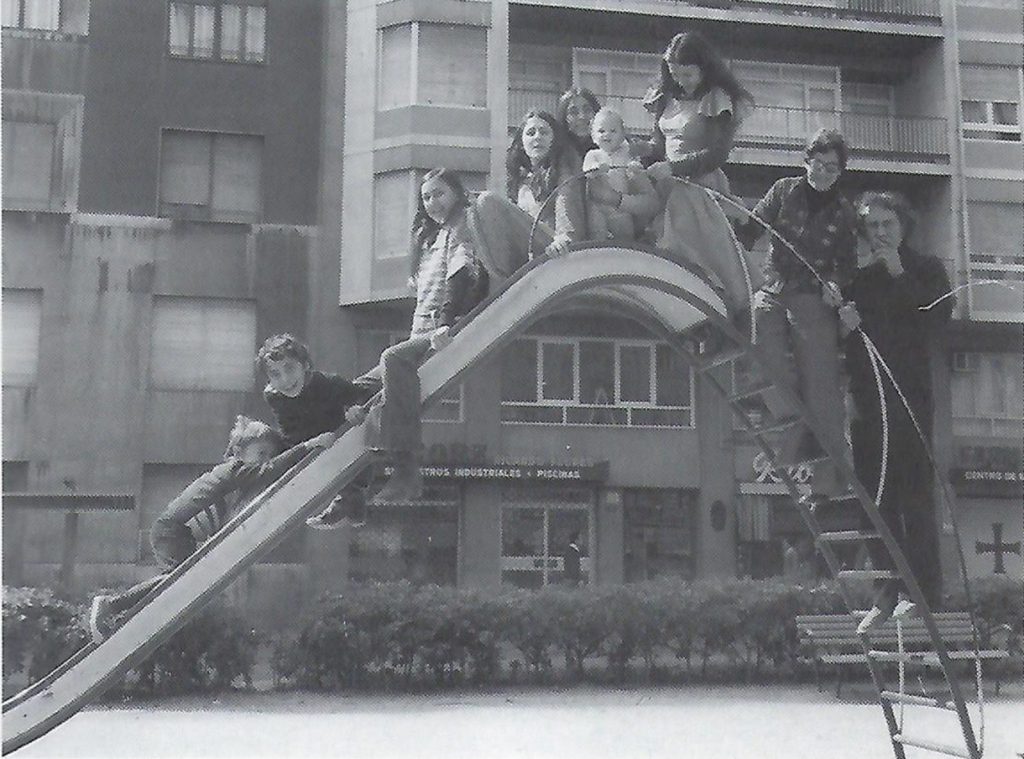
Beginnings in the world of art (1956-1964)
Following in his grandfather’s footsteps, Argimon briefly became involved in the commercial promotion of prints published by a French company (Picasso, Braque, Chagall, Derain, Foujita…) and opened his own publishing business of reproductions, an interesting precedent for his artistic career. However, for financial reasons, Argimon was soon forced to give up this project and joined the cars’ SEAT factory, where he worked until 1963. This experience impacted his conception of the world, humankind and society, leaving its mark on a body of work that would always reflect a profound social consciousness.
Independently of his work at SEAT, Argimon continued to paint and came into contact with the Barcelona art world. In 1959, he took part in his first group exhibition in Barcelona, at the Ateneo Colón in Pueblo Nuevo. That same year he met Juan Eduardo Cirlot, a poet and important art critic, who not only supported the emergence of the new Catalan artistic movements of the time, but also helped Argimon on both a personal and artistic level.

From this moment on, the artist began to exhibit his work in various group and solo shows. As a founding member of Ciclos de Arte de Hoy (1962), which brought together young artists, he took part in the group’s first exhibition at the Cercle Artístic de Sant Lluc. That same year he received the first accessit in the Joan Miró Drawing Prize.
Among his solo exhibitions during these years, the first one at the Kasper gallery in Lausanne (1961) stands out, followed by others in Spain (Ibiza, Oviedo, Madrid, Barcelona, Tarragona) and abroad (Miami Museum of Modern Art). On the occasion of the exhibition at the Ateneo de Oviedo, a short monograph of the artist written by Cesáreo Rodríguez Aguilera was published.
Stays abroad and new artistic interests (1965-1975)
In 1965, Argimon won the Cercle Maillol Prize awarded by the Institut français of Barcelona and received a grant from the French government to go to Paris, where he lived for eight months and studied lithography at the École des Beaux-Arts. In contrast to the atmosphere in Spain in the 1960s, that he felt was closed and oppressive, the City of Lights offered the artist the opportunity to immerse himself in the new European artistic, literary and cinematographic trends of the time. During his stay in Paris, he presented his work at the Salon des Réalités Nouvelles.
By this time, his position in the Catalan art world was already well established, as he continued to participate in various group exhibitions in 1965, including Evocació del Modernisme (Evocation of Modernism), held in Barcelona, where he exhibited together with Colita, Curós, Galí, Guinovart, Maspons, Ràfols Casamada, Tharrats and Vallès, as well as Convergences entre el Pensament i la Plàstica Actuelles (Convergences between Current Thought and Plastic Art), organised by the Institut français of Barcelona with Cardona Torrandell, Cuixart, Guinovart, Puig, Gubern, Ràfols Casamada and Todó. The publication in 1965 of a second monograph devoted to Argimon’s work (with texts by Areán, Cirlot, Puig and Rodríguez Aguilera) confirms the recognition of his artistic career.
On his return from Paris in 1967, the painter began to combine his activity in the art world with teaching, working as a drawing teacher at the Lycée français in Barcelona, where he taught until 1986. That same year, Oriol Duran published the first portfolio of the artist’s printmaking, entitled El coure amb l’àcid i la resina: 5 resultats (Copper, acid and resin: 5 results), with an introduction by Roland Barthes. In 1968, the Institute of International Education awarded him a grant to live in New York for nine months. During this time, he travelled around the United States and visited Mexico, a country where he made his first contacts with local painters such as Rojo, Tamayo and Cuevas. In New York, he perfected his knowledge of silkscreen printing at the Pratt Center Institute. The artistic and cultural effervescence of the city had a decisive influence on the painter’s personality and work. It also meant a diversification of his creative work. Although Argimon’s interest in cinema was not new, it was during his New York experience that he made his first two short films: New York (8 mm, colour) and Ibiza Single 8 (super 8, colour). In 1969, he made a third one, produced by Santos Aparicio, Flash 69 (super 8, black and white).
In 1970, his collaboration with Ricardo Bofill’s architecture studio led him to paint a large mural for the buildings designed by this architect in Moratalaz (Madrid). During this time, the artist shot a new short film, Moratalaz (super 8, colour), produced by the architecture studio itself.
Four years later, in 1973, his vocation for cinema manifested once again in Homenatge a Rimbaud (Homage to Rimbaud) (16 mm, colour), a short film sponsored and produced by the Deutsches Institut of Barcelona, with a soundtrack by the composer Joan Guinjoan.
From 1969 onwards, Argimon intensified his work in the field of artistic printmaking: he produced a portfolio, Equidistancias (Equidistances) with five silkscreen prints introduced by Enrique Salgado (1969), and he designed the book De oca a oca (The Royal Goose Game) with photographs by José Adrián. A year later, he presented La Noticia (The News), a portfolio of five lithographs, published by Santos Aparicio with a poem by José Agustín Goytisolo, and he also designed Ramon Canals’ poetry collection, Poemes de 7 i no res (Light Poems). In 1971, a portfolio of five serigraphs was published with the title DA 55-71. Twelve etchings with an introductory text by Ana María Moix are collected in the portfolio Consejos (Some Advice), published by Pascual Fort in 1975.
In 1973 he became a lithography teacher at the Escola d’Arts Aplicades i Oficis Artístics (Llotja) in Barcelona, where he taught until his retirement (1995), carrying out significant pedagogical work.
During this decade he held various solo exhibitions in Spain: Barcelona (1969, 1971, 1971, 1973, 1975), Madrid (1972), Ibiza (1965, 1967, 1970, 1973), Santander (1965), Córdoba (1968), Tarragona (1968), Bilbao (1972) and Zaragoza (1975). He also had solo exhibitions abroad, in Fort Lauderdale (1965), Cleveland (1967), Seattle (1968), Maastricht (1968), Miami (1969), Mexico City (1972) and Paris (1972).
His work was shown in national collective exhibitions as well. He participated in Estampa Popular de Barcelona (Popular Printmaking of Barcelona) (1967) and in the different editions of the Muestra de Arte Nuevo (New Art Show) (MAN), also held in Barcelona, and in the travelling exhibition Plàstica Catalana Contemporània (Contemporary Catalan Plastic Arts) in Catalonia. Besides, he showed his work in joint exhibitions abroad (New York, Miami, Mexico City, Santiago de Chile, Montevideo, Buenos Aires, Tokyo, Milan).
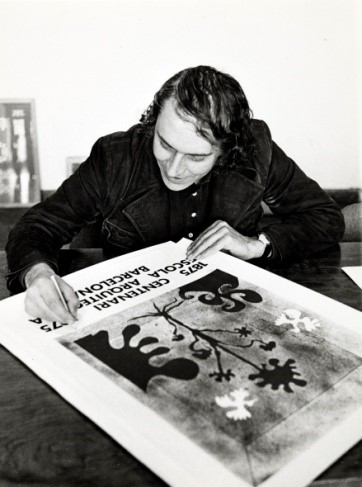

Consolidation as an artist and international projection (1976-1996)
In 1976, after the purchase of a house in Alcanar, a small village on the coast of Tarragona, Argimon began to spend long periods in this region, creating close ties with the local cultural and artistic life. From that time onwards, his pictorial activity developed between his studio in Barcelona and the one in Alcanar (Mas Ganda). Argimon combined his creative and teaching work with his studies (the painter graduated in Fine Arts from the University of Barcelona in 1983) and with frequent trips around Spain and abroad to display his work.
Argimon’s personal and social commitment to the world of art is reflected in the different functions and activities he carried out from this time until the end of his life. In 1982, he was appointed president of the Federació Sindical d’Artistes Plàstics de Catalunya (F.S.A.P.C.) whose main objectives are the representation and promotion of the economic, social, professional and cultural interests of artists. Argimon held this position for two years, from 1982 to 1984, and was re-elected in 1987 for five years. In 1990, he was appointed member of the Board of Directors of the recently created society of visual artists’ rights, VEGAP (Visual Entidad de Gestión de Artistas Plásticos), chaired by Albert Ràfols Casamada. Critics have pointed out his ethical sense and his commitment to solidarity as something inherent to his personality.
Between 1983 and 1985 Argimon was awarded several prizes: the Mini Print International engraving prize (Cadaqués) in recognition of his work in the field of printmaking (1983), the second prize Lassalle de Arte in Barcelona (1985) and the first accessit in the F.C. Barcelona I Art Biennial (1985).
The interest awoken by the artist’s work is also reflected in the publication, in 1976, of a new monograph on his work by the critic Josep Vallés Rovira in the collection Artistas Españoles Contemporáneos (Dirección General del Patrimonio Artístico y Cultural, Ministerio de Cultura). A few years later, in 1989, Lourdes Cirlot dedicated a lavishly illustrated monograph to the painter (published by Àmbit), and in 1993, Francesc Miralles wrote another extensive monographic study published by Aubert editions (Olot).
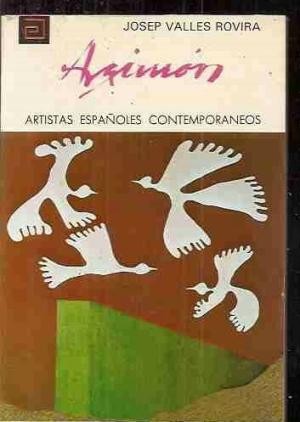
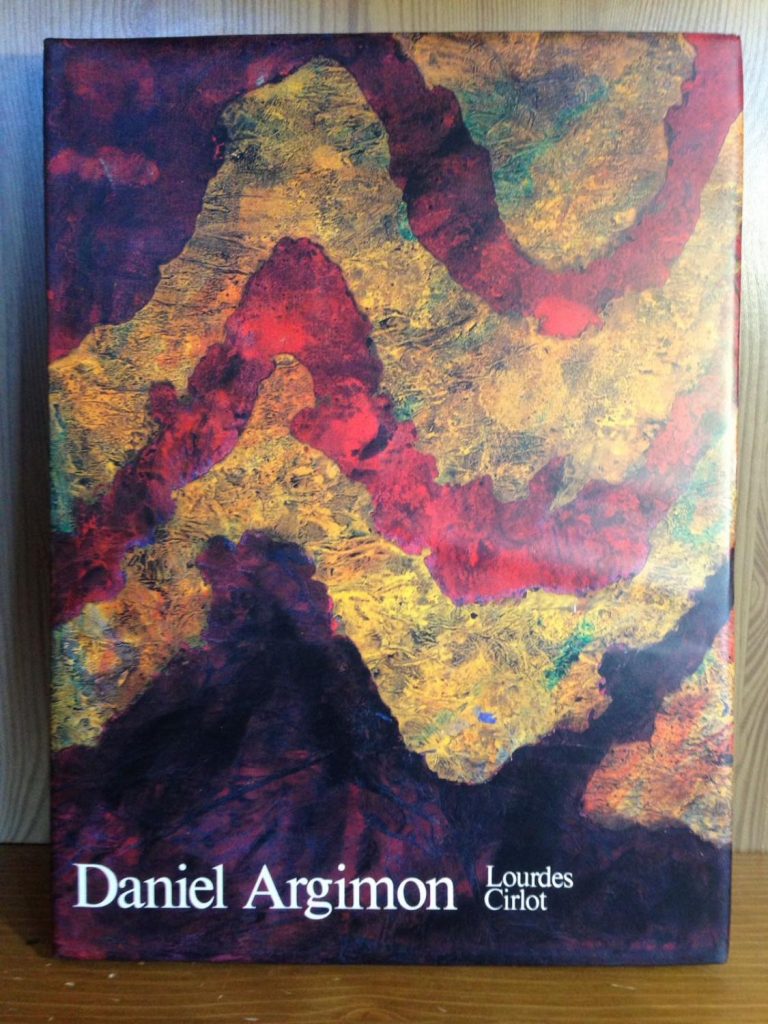
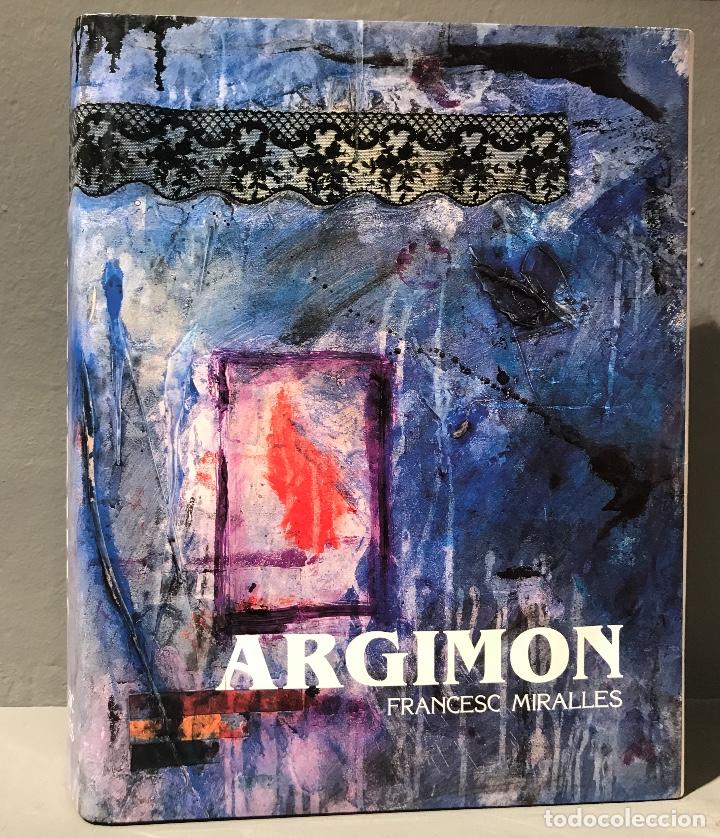
Meanwhile, Argimon continued his work in the field of artistic printmaking. In 1977 he produced a new portfolio with five etchings, entitled Eines (Tools) (La Polígrafa, Barcelona), and in 1983 a new work was published (Editart, Geneva), entitled Objects de la Nuit (Night Objects), with an etching and a poem by José Ángel Valente. This same year, the Union Régionale pour le Développement de la Lithographie d’Art (URDLA) invited him to its workshops in Lyon to produce an edition of lithographs (1989).
This long period of the painter’s life was also marked by the numerous trips he made to exhibit his work abroad. He held solo exhibitions in Geneva (1976, 1977, 1982), Basel (1983), The Hague (1989), Ulm (1986, 1987, 1998, 1989) — where a complete exhibition of the artist’s graphic work was shown in 1988 — Freiburg im Breisgau (1988), Paris (1989, 1992, 1995), Bordeaux (1991), Milan (1995) and Mexico City. In the latter he exhibited at the Pecanins gallery (1980, 1984, 1991), the Orfeó Català de Mèxic (1984), the Museo de Arte Moderno (1984) and the Museo Nacional de la Estampa (1991), where he presented a collection of printmaking works produced between 1975 and 1991.
In 1994, the Instituto Cervantes organised an exhibition of the artist’s work, which toured several cities in the Middle East: Damascus, Beirut, Amman, Cairo and Alexandria.
Many other solo exhibitions were held in his native city, including, among them, the one in 1978 at the Joan de Serrallonga gallery — which the artist entitled Destruir para empezar (Destroying to begin with) —, those at the Àmbit gallery (1987, 1990) and the one at the city’s Institut français in 1991. There, he presented a selection of his works that were not exclusively pictorial, but created by integrating or manipulating various objects and materials. An extensive exhibition of his latest works was presented in 1994 at the exhibition hall of the Banco Bilbao Vizcaya (BBV). In the rest of Spain, solo exhibitions were held in Zaragoza (1975), Alicante (1975), Figueres (1976), Cuenca (1977), Córdoba (1978), Girona (1978, 1983), Madrid (1979, 1991), Palma (1981, 1987), Cadaqués (1980, 1984, 1994), Castellón (1979), Sant Cugat del Vallès (1991) and Zaragoza (1991), among others.
During this long period, Argimon’s work was also present in many group exhibitions abroad. Of the various exhibitions held in Mexico City, Constantes del Arte Catalán Actual (Constants of Catalan Art Today) (1991) stands out. Worth mentioning too, is his participation in the exhibition Mini Print International (Seoul, 1988), in Autour d’Arrabal (Around Arrabal) (Paris, 1991) and in Anthologie Estampes Originales (Anthology of Original Printmaking) (Lyon, 1995).
At the national level, his work was also shown in numerous group exhibitions, including those held in Barcelona: Amnistia, Drets Humans i Art (Amnisty, Human Rights and Art) (1976), El Gravat de Creació. Calcografia contemporània a Catalunya (Creative Printmaking. Contemporary intaglio in Catalonia) (1983), L’informalisme a Catalunya (Informalism in Catalonia) (1990) — organized by the Generalitat de Catalunya and which, after being shown at the Centre d’Art Santa Mònica in Barcelona, toured various cities in Spain — and Hommage à Sartre, 1965 (Homage to Sartre, 1965), held in 1994 at the Institut français. Also worth mentioning is his participation in group exhibitions in various Spanish cities such as in Homenaje a Picasso (Homage to Picasso) (Malaga 1977) or those held in Madrid Homenaje a María Zambrano (Homage to María Zambrano) (1989) and Bicentenario de la Litografía (Bicentenary of Lithography) (1996).
On 21st November 1996, Argimon died in Barcelona, victim of cancer, but his work has continued to be exhibited in posthumous exhibitions such as the one held in 1997 in Barcelona, at the Centre d’Art Santa Mònica, the one organised by the Museu d’Art Modern of Tarragona (1998) or the one commemorating the tenth anniversary of his death, in 2007, by the Institut français of Barcelona.
